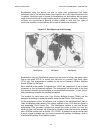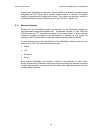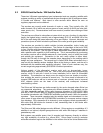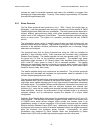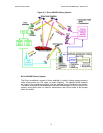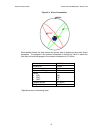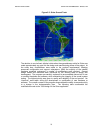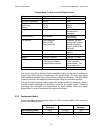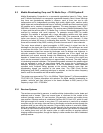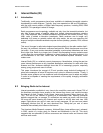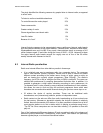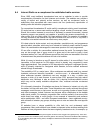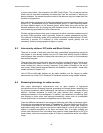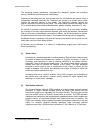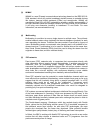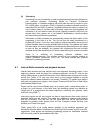DIGITAL RADIO GUIDE SATELLITE TRANSMISSION - MOBILE BC / TU MEDIA
75
5.3 Mobile Broadcasting Corp. and TU Media Corp. – ITU-R System E
Mobile Broadcasting Corporation is a commercial organisation based in Tokyo, Japan
and TU Media Corporation is a commercial organization based in Seoul, Korea. Although
they have one geostationary satellite in common, each of them can use its own
transponders and is independently providing high quality digital audio, medium quality
digital video and multimedia data services to vehicular, portable and fixed receivers using
the satellite and a number of terrestrial repeaters. The same frequency band, 2630 -
2655 MHz, is used by sharing polarization. The service area of Mobile Broadcasting Corp.
is Japan and the service area of TU Media Corp. is Korea. Broadcasting signal can be
received by receivers with small antennas. To generate enough EIRP for mobile
reception, the satellite is equipped with a large transmitting antenna and high power
amplifiers. After the launch of the satellite in March 2004, the commercial service in
Japan was started in October 2004, currently including 30 audio channels, 8 video
channels and about 60 items of multimedia data services. The commercial service in
Korea will be started in May 2005, including 22 audio channels and 12 video channels.
The major issue related to signal propagation in BSS (sound) is signal loss due to
blockages on the signal path from the satellite to the receiver. Two techniques are used
to overcome this issue. One of them is bit-wise interleaving, which is used to overcome
the instantaneous signal loss caused by blockages, such as bridges over highways, in
vehicular reception environment. Invalid data generated due to the signal loss are
distributed over several seconds through the deinterleaver and corrected through the
decoder of forward error correction code in the receiver. The period of the signal loss
which can be recovered by this technique is approximately a second. The other method
is introducing terrestrial repeaters. The terrestrial repeaters retransmit the satellite signal
and are expected to cover the area where signal loss occurs due to blockages, for
example, buildings and large constructions. In the circumstances, where terrestrial
repeaters exist, multipath fading appears at the receiver because more than two
broadcasting signals are received at the same time. The CDM (Code Division
Multiplexing) and RAKE combining technique is adopted, so that the same frequency
band is used for the satellite and the terrestrial repeaters.
The system was approved by ITU in July 2000 as ”Digital System E’ in Recommendation
ITU-R BO.1130, System description and selection for digital satellite broadcasting to
portable, vehicular and fixed receivers in the bands allocated to BSS (sound) in the
frequency range 1400 – 2700 MHz.”
5.3.1 Receiver Systems
The services are provided to persons, to mobile vehicles (automobiles, trucks, boats and
airplanes) and to homes. There are several types of receivers for this market at the
moment; palmtop receiver, PC card receiver, plug-and-play receiver and mobile phone
type receiver. Palmtop receiver is a dedicated receiver with 3.5-inch LCD, which is small
and light enough to be carried to any place. PC card receiver is used with a notebook
computer and you can enjoy video services on the display and audio services through the
speakers while you are using the computer. Plug-and-play receiver is used with cradles,
which are installed in car and at home, so that you can use the receiver not only in car
but also at home without buying extra receiver. Mobile phone type receiver is embedded
in a mobile phone and you can receive video or audio services at anyplace without
bringing additional equipment, though the display is rather smaller than that of dedicated
palmtop receiver.



